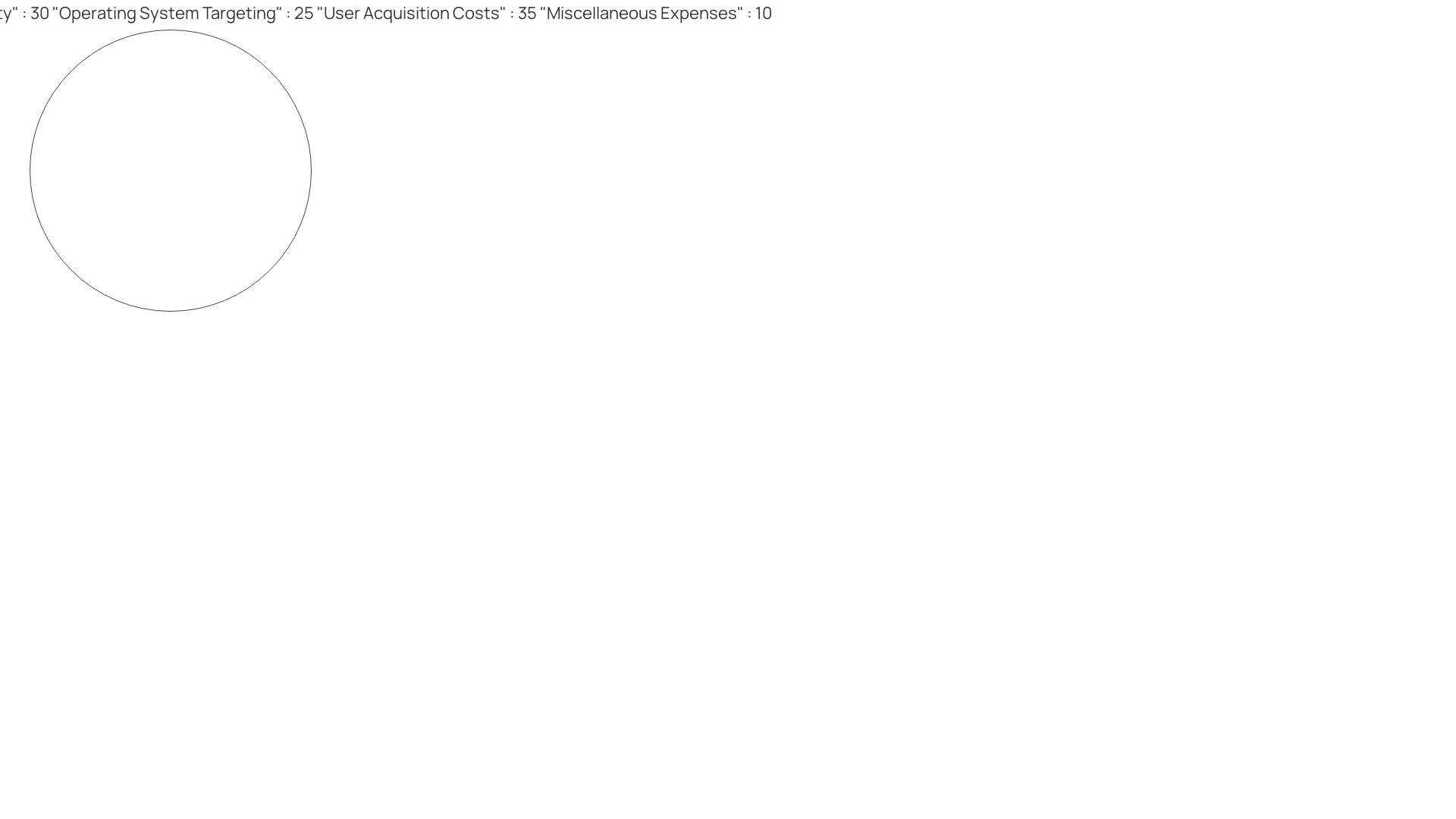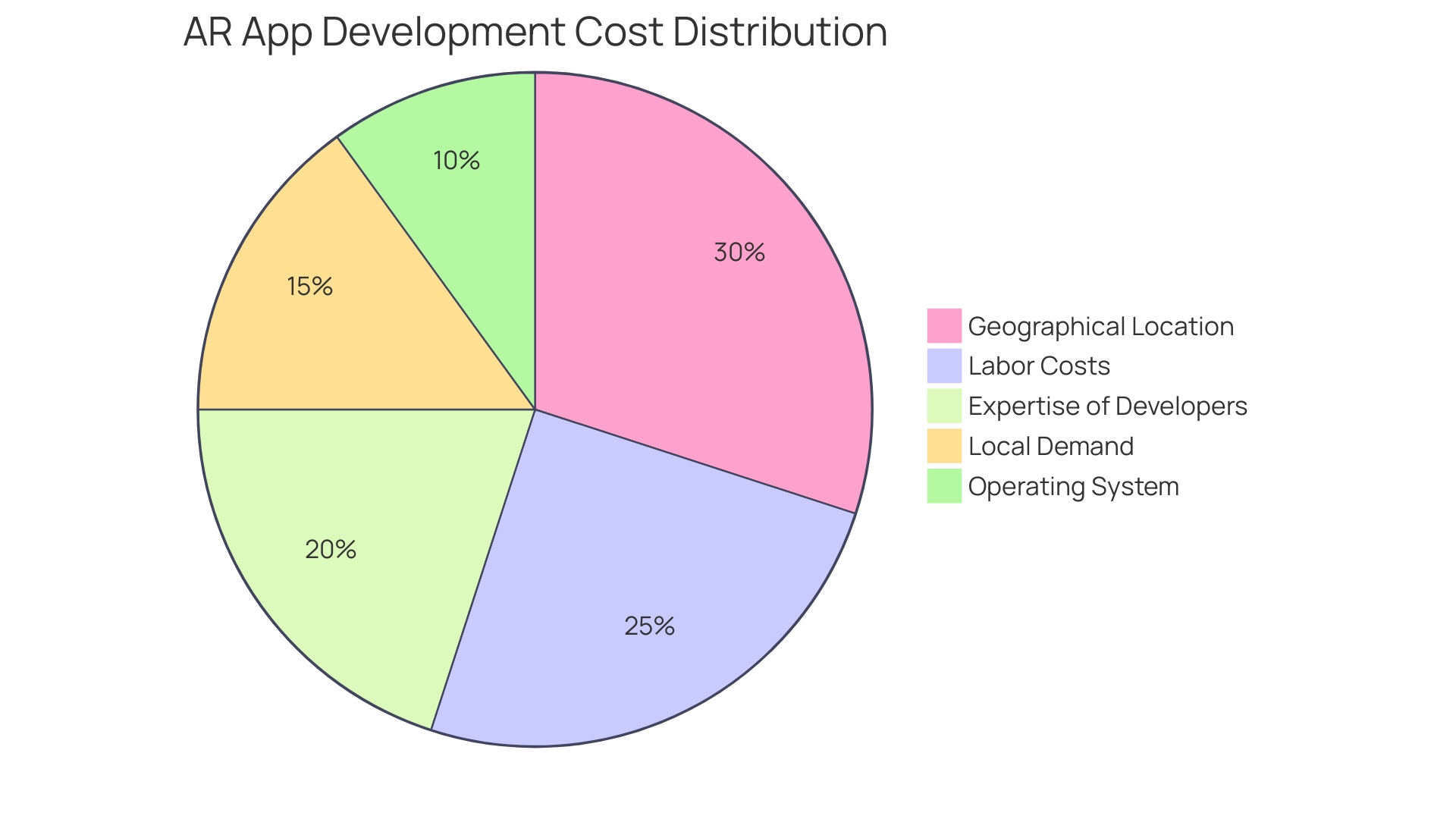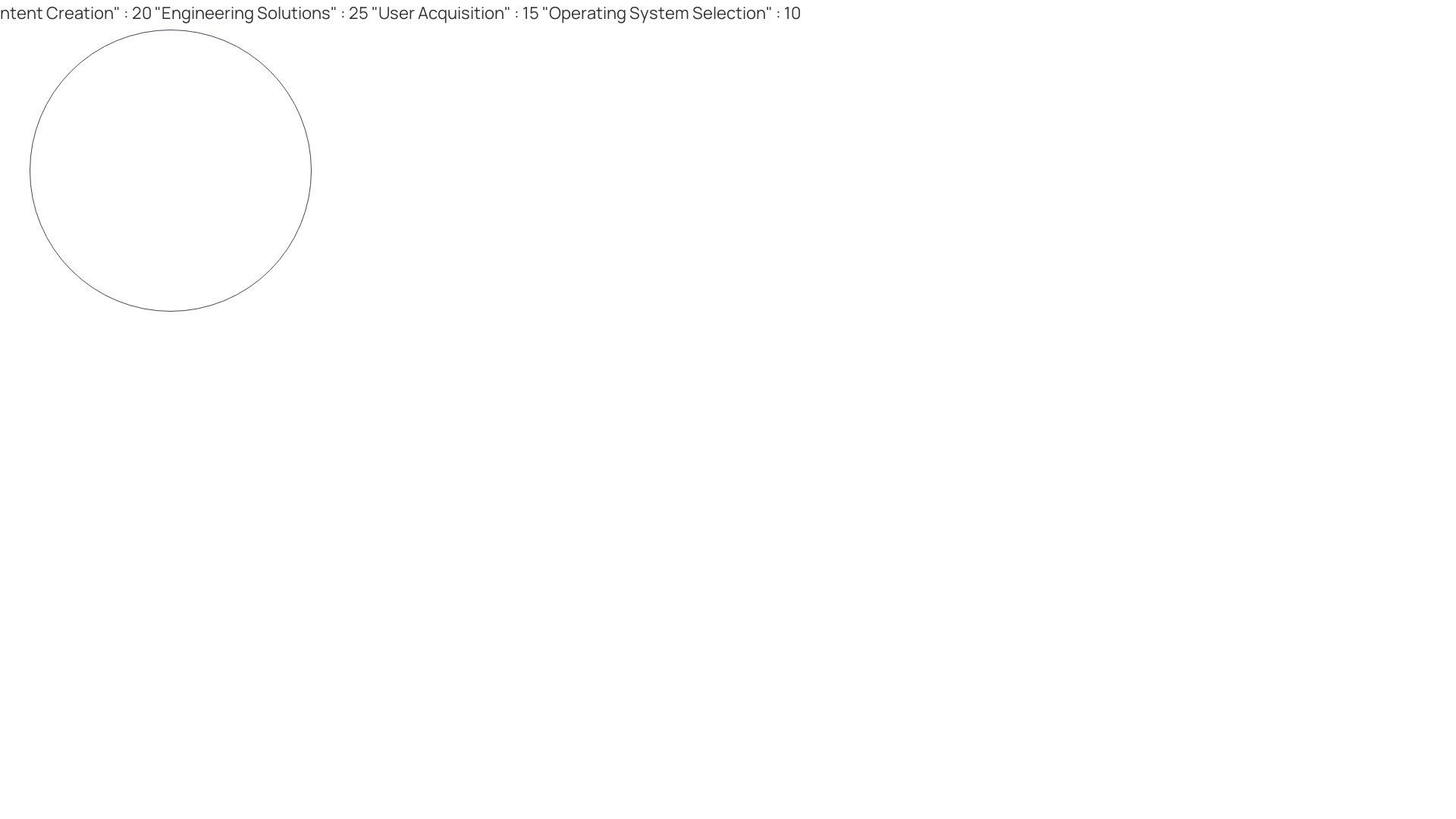Introduction
The landscape of Augmented Reality (AR) app development is rapidly evolving, with applications ranging from immersive marketing experiences to transformative ecommerce solutions. The cost associated with crafting these innovative digital overlays can span a wide spectrum.
Statista's projections indicate that by 2025, mobile app revenue could surpass $613 billion, showcasing the significant financial potential of investing in AR development. However, the investment required for AR app development can start as low as $10,000 and escalate beyond $350,000, influenced by various factors such as the intricacies of the project and the desired platform, with Android user acquisition costs historically being lower than iOS due to the larger global user base in regions like Latin America, Europe, and Asia.
Furthermore, industry titans like Facebook Corporation and Samsung Group are making substantial investments in AR, signaling strong market growth and diverse applications across sectors including healthcare, retail, and defense. The success story of Swiss telecom giant Swisscom, which utilized AR to enhance brand visibility and appeal to the under-40 demographic, exemplifies the powerful impact of AR in marketing and consumer engagement. As AR technology continues to permeate through different industries, understanding the cost dynamics is essential for businesses aiming to leverage AR for competitive advantage.
Factors Affecting Augmented Reality App Development Costs
The landscape of Augmented Reality (AR) app development is rapidly evolving, with applications ranging from immersive marketing experiences to transformative ecommerce solutions. The cost associated with crafting these innovative digital overlays can span a wide spectrum.
Statista's projections indicate that by 2025, mobile app revenue could surpass $613 billion, showcasing the significant financial potential of investing in AR development. However, the investment required for AR app development can start as low as $10,000 and escalate beyond $350,000, influenced by various factors such as the intricacies of the project and the desired platform, with Android user acquisition costs historically being lower than iOS due to the larger global user base in regions like Latin America, Europe, and Asia.
Furthermore, industry titans like Facebook Corporation and Samsung Group are making substantial investments in AR, signaling strong market growth and diverse applications across sectors including healthcare, retail, and defense. The success story of Swiss telecom giant Swisscom, which utilized AR to enhance brand visibility and appeal to the under-40 demographic, exemplifies the powerful impact of AR in marketing and consumer engagement. As AR technology continues to permeate through different industries, understanding the cost dynamics is essential for businesses aiming to leverage AR for competitive advantage.
Cost Breakdown for Different Types of AR Apps
Navigating the landscape of augmented reality (AR) app development requires a nuanced understanding of the different types of AR experiences available. Marker-based, markerless, location-based, and projection-based AR apps each come with their own set of technical requirements and developmental complexities.
As you consider which type of AR app aligns with your objectives, it's crucial to grasp how these variances influence the overall cost. For instance, the frequency of usage by end-users and the specific metrics used for cost analysis can significantly alter the budget.
When assessing the financial investment for your AR app, it's essential to recognize that the costs can be as diverse as the applications themselves, ranging from a starting point of $10,000 to upwards of $350,000. This broad spectrum is reflective of the intricate factors at play, which include but are not limited to the app's complexity, the operating system it targets, and the anticipated user acquisition costs—which, as data reveals, differ between iOS and Android platforms. In particular, Android users have historically been less expensive to acquire, a trend driven by the platform's larger user base in regions such as Latin America, Europe, and Asia. By meticulously scoping your project and taking these elements into account, you will be better equipped to make decisions that are both financially prudent and strategically sound for your AR app endeavor.

Regional Variations in AR App Development Costs
The investment required for AR app development is influenced by various factors, including geographical location. Labor costs, the expertise of developers, and local demand play pivotal roles in determining the overall expense. Interestingly, the operating system for which the app is being developed also significantly impacts user acquisition costs, with Android generally being more cost-effective than iOS due to its larger user base, especially in regions such as Latin America, Europe, and Asia.
As we see a surge in global mobile app downloads, with projections indicating over $613 billion in revenue by 2025, the decision to develop an AR app should factor in these regional and platform-based cost variations. The development costs can range from $10,000 to upwards of $350,000, contingent on the complexity and requirements of the project. By comprehending these cost-influencing elements, businesses can make strategic decisions on where to develop their AR app to optimize their investment.

Impact of Complexity and Technology on Costs
Augmented Reality (AR) app development, much like its mobile app counterpart, is subject to varying costs based on several pivotal factors. The sophistication of AR applications, from basic overlays to advanced interactive experiences, directly influences the development time and specialized expertise required.
For example, features such as real-time user interaction, high-quality graphics, or the ability to integrate with existing systems can escalate the complexity and, consequently, the investment needed. When it comes to the development platforms and tools chosen, this too can sway the overall expense.
The frequency of use and the specific metrics used for cost analysis are crucial in assessing the long-term financial commitment. It's worth noting that the cost to acquire users also varies by the operating system, with Android generally offering a lower Customer Acquisition Cost (CAC) compared to iOS, due to the larger user base in regions like Latin America, Europe, and Asia. This disparity in CAC should be factored into the cost considerations when developing AR apps tailored for different platforms. Keeping these variables in mind ensures a more accurate estimation of costs, aligning with the end-user needs and business objectives.
The Role of Design and Content Creation in AR App Development Costs
The investment in design and content creation is a pivotal element in AR app development, directly influencing the final cost. The process is not unlike the journey Tipteh, an industrial automation specialist, embarked upon when crafting their engineering solutions.
Tipteh's commitment to high-quality 3D views for their designs underscores the importance of detail and precision in the developmental phase, directly correlating to user-engagement and the ultimate success of the application. In the realm of mobile apps, which have become integral to daily life and are projected to generate substantial revenue in the coming years, the stakes are high.
As reported by Statista, global mobile app downloads are on the rise, with the potential to bring in over $613 billion by 2025. The cost of developing these applications can start modestly but can quickly escalate to $350,000 or more, contingent on the complexity and quality of the design and content. The operating system chosen also plays a role in user acquisition costs, with Android historically being less expensive than iOS, particularly in regions like Latin America, Europe, and Asia. This highlights the need for careful budget allocation to the design phase to ensure not just a visually stunning AR experience, but one that is interactive and engaging, ultimately contributing to the app's success.

Marketing and Promotion Strategies for AR Apps
The landscape of marketing AR apps is as dynamic as the technology itself. Tipteh, an industrial automation specialist, exemplifies the need for precision and efficiency in promoting complex solutions.
They sought a tool that provided a 3D view for their designers, underscoring the importance of detail in engineering and marketing alike. Similarly, Swisscom's deployment of AR in advertising its 'blue' consumer services aimed to elevate brand visibility and appeal to the under-40 demographic.
To emulate such success, one must consider the spectrum of marketing avenues, from app store optimization, which enhances discoverability, to social media marketing that can engage a vast audience. Influencer collaborations offer authenticity and reach to specific market segments, while paid advertising delivers controlled and targeted messaging. These strategies, backed by narrative analysis and revenue projections from Artillery Intelligence, suggest that a well-allocated budget can propel an AR app to the forefront of its market. Current trends indicate that mobile AR, being widely accessible, is poised to revolutionize marketing across industries, making the strategic investment in promotional activities a critical component of AR app development.
Conclusion
In conclusion, the landscape of Augmented Reality (AR) app development is rapidly evolving, offering a range of applications from immersive marketing experiences to transformative ecommerce solutions. The cost associated with crafting these innovative digital overlays can vary widely, with potential investments ranging from as low as $10,000 to over $350,000.
Understanding the cost dynamics is essential for businesses looking to leverage AR for competitive advantage. Factors such as the intricacies of the project, desired platform, and regional variations in user acquisition costs influence the overall expense.
Android user acquisition costs have historically been lower than iOS due to the larger global user base in regions like Latin America, Europe, and Asia. Developing an AR app requires careful consideration of different factors.
The type of AR experience chosen, whether marker-based, markerless, location-based, or projection-based, comes with its own technical requirements and complexities that impact costs. Additionally, the complexity of the application itself and the choice of platforms and tools further influence the investment needed.
Design and content creation play a pivotal role in AR app development costs. Investing in high-quality design ensures a visually stunning and engaging user experience.
Marketing strategies are also crucial for promoting AR apps successfully. App store optimization, social media marketing, influencer collaborations, and paid advertising all contribute to increasing visibility and reaching target audiences. As AR technology continues to permeate different industries, understanding these cost dynamics becomes increasingly important. By comprehending these factors and making strategic decisions based on them, businesses can optimize their investment in AR app development. With the significant financial potential projected for mobile app revenue in the coming years, leveraging AR for competitive advantage has become a compelling opportunity for businesses across various sectors. In summary, by navigating the landscape of AR app development with an understanding of cost dynamics and making informed decisions throughout the process, businesses can harness the power of AR technology to enhance customer engagement and drive success in their respective industries.





